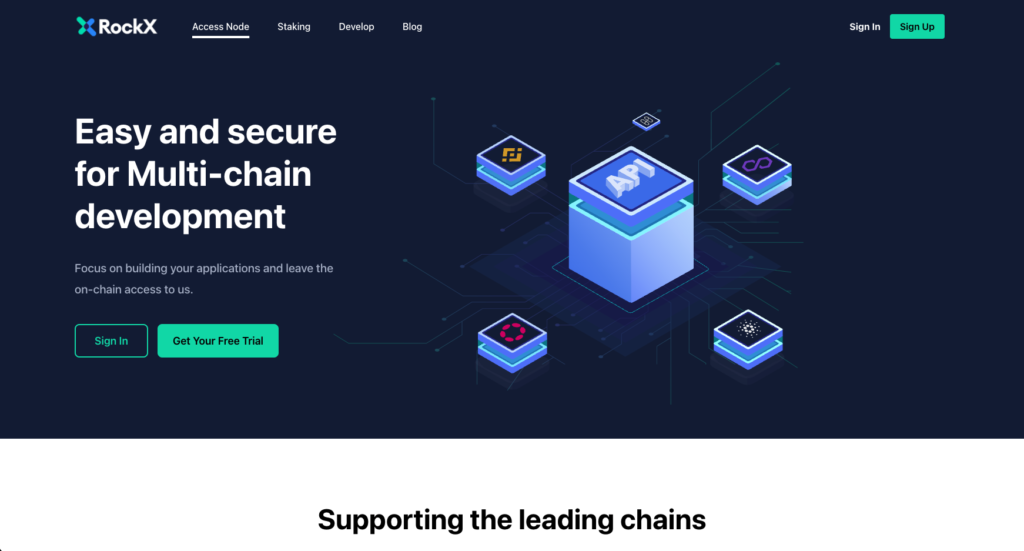They are, arguably, the only guardians of blockchain integrity. In many ways and in most rising blockchain projects, they have usurped miners as the human backbone of the industry. They are node validators and node managers, and this influence we’ve just listed is only bound to increase and expand in the near future of the space.
But what do they do exactly? And at what cost? Let’s dive into their world – starting with an explanation of why the role of validators is crucial and how they set up their important operations.
The Importance of Nodes
It’s safe to say that cryptocurrency and, more broadly, the blockchain could not exist without healthy and well-run nodes.
Nodes are the processing bricks of the chain, providing it with security, intercommunicability and data transparency. Without them, there would be no consensus and the concept of a decentralized network would lose its meaning.
Aside from what they give to the network and the community utilizing it, nodes can also be extremely rewarding to their managers: validators are motivated mainly by enticing commissions or rewards obtained for the safe and correct processing of the transactions and data flow carried out by their node.
Their core role in crypto is clear. But how does one go about setting up one?
Setting Up A Node

Successfully setting up a node is a process much more straightforward and familiar than most people would expect, in many ways akin to installing any other piece of software – just in this case, the requirements are likely to be quite high.
It naturally starts with researching and reviewing the hardware requirements listed by the network one wants to participate in. This process can then be tailored to specific hardware as well since each coin has a varying degree of hardware resource requirement.
Bitcoin, for example, requires up to 1TB of free space, a read speed of at least 100 MB/s, an internet speed of around 500 KB/s and a bare minimum of 8GB of RAM.
These are by no means prohibitive requirements and they are almost OS-agnostic, but they would already rule out a wide majority of the most popular consumer laptop devices available on the market.
Once hardware demands are met, the next step is to install the node on the device selected. This usually requires a complex multi-folder system which explains the requirement for large amounts of local storage listed above.
This process can be extremely long and time-consuming, and more modern networks have adapted. For example, an Ethereum node can be synced in either fast, full or light mode – with each setting requiring a varying degree of advanced hardware, storage space and read speeds, in a further bit to render node validation more universally accessible. Something which a proof-of-stake network can only benefit from.
The final steps in node building are extensive node testing and, following that, keeping a watchful eye over the myriad of potential vulnerabilities it can be exposed to, and the malicious attention it can attract.
Traffic restrictions need to be put in place to prevent the node from exceeding the individual bandwidth capabilities of a certain node, and anti-virus software need to be tweaked to ensure any breach on the host device doesn’t end up infecting the entire network via the hosted node.
Finally, a brand new node is likely to have a brand new validator and inexperienced manager, and it will attract hackers like bears to honey. The early days of a node’s life are when it’s most likely to be attacked, and managers need to be wary of this and have proper defences set up.

Monitoring Your Node
While the above might seem like a lot, it is truly just the start of a journey for each willing participant.
After the initial excitement, it’s time to set up a few spreadsheets and start monitoring the cost of such an important but work-intensive activity. To the hardware costs incurred to meet the requirements listed above, usually in the few hundreds of dollars, each validator needs to add the ongoing costs to access the internet and power the devices in question.
These will vary greatly depending on the specific offers available in the national markets of each validator, but they tend to hover around $200-400/year for most US based validators, when taking in consideration both energy and hosting costs.

Once one has worried about the safety of their metaphorical wallet, it’s time to keep the node just as secure to protect it from the risks mentioned above.
Most of the measures to put into place are common sense digital safety ideas: it’s essential to secure your own home network to the best of your capabilities, particularly if using a wireless network. It’s also crucial to employ a secure password manager and 2FA to further decrease the likelihood of access breaches – and adding Tor browser or VPN usage on top of this can combined into a very secure environment.
The rest of the solutions available are even less groundbreaking, but not a bit less optional. Validators need to ensure their nodes are as less inviting to potential bad actors are possible: this starts with making them less visible.
For this reason, it’s advisable to run a local node rather than a cloud node run on third-party servers – and it’s also paramount to keep any personally owned coins off the node device and stored away in a cold wallet where they can’t be easily reached via digital infiltration.
Finally, there is very ‘real’ and ‘analog’ security protocol to follow: physically hiding the node device somewhere where its high-spec hardware won’t attract malicious attention – and, just like with any sizable cryptocurrency holding, not telling anyone who doesn’t need to know about the valuable device sitting in your house.
Don’t Get Slashed

As we have thoroughly explained, being in charge of a full node is a role that brings a lot of responsibility. A responsibility which is rewarded within proof-of-stake protocols just as much as it can yield punitive action if it gets misused.
In particular, the main method of punishment tends to be something called slashing. The idea is simple: if a node validator or manager turns into a bad actor, their validator stake is slashed accordingly to the severity of their infraction and to the percentage of accompanying malicious validators that are active in the network at a given time. This slashing can be a small percentage or even a complete slashing in very severe cases.
But what triggers such a harsh rule?
Usually, the two main types of bad behaviour targeted are protracted downtime (i.e. the absence of any signed transactions for a set amount of time) or accidental double signing, an instance in which a backup node mistakenly writes off a transaction that has already been taken care of via the main node.
In the former case, the behaviour can slow down and compromise the efficiency of the network, while in the other it can set back the consensus mechanism significantly – and in some cases, even bring the integrity of the network as a whole into question. So it’s easy to see why both must be addressed and corrected swiftly.
Big Power, Big Responsibilities

While the above should only be considered a relatively shallow overview of all the challenges that come into play when wanting to set up and run a node, it should also suffice in giving the idea of how much planning, monitoring and costing needs to come into play for every wannabe node validator.
The role can bring a lot of strategic end financial upside for those willing to take it on, but they can’t expect to act as independent business entities: by taking on ownership of a node, they become naturally and automatically embedded in a community that expects a lot of integrity and due diligence from those it entrusts with gatekeeping its network.
Build Your DApps Hassle-Free

Now that you know what it takes to set up and run a node, try freeing up your time to creating the best dApps and decrease development time by 80% by outsourcing running a blockchain node. RockX offers state-of-the-art security and efficiency, allowing you to focus on building your dApp while RockX handles the setup and maintenance of your nodes.
Build across over 20 proof-of-stake chains starting from $0/month. Plans are flexible and scalable to meet your needs as your project grows.









